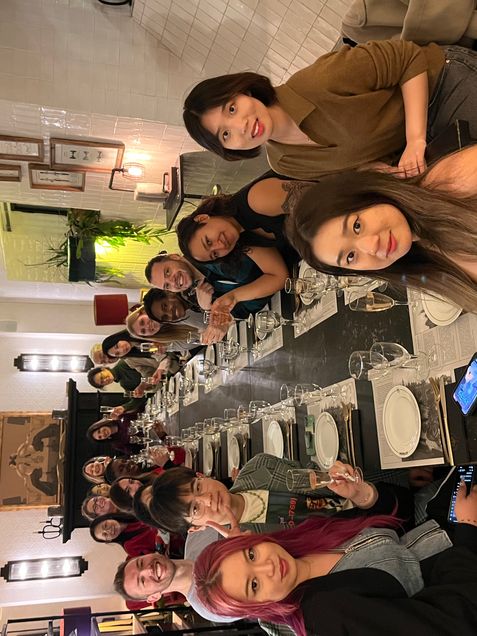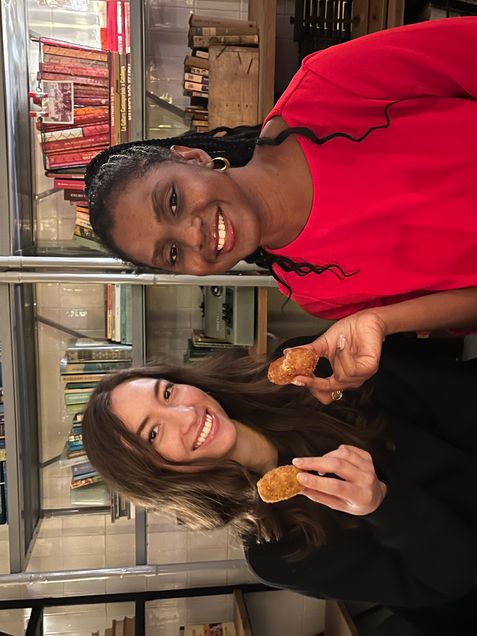March 5: Casa Rafols

It is painfully obvious to anyone that’s ever waited too long between meals that food is the master of not just our digestive organs, but of our minds and our hearts. Nothing is quite like the first bite of a McDonald’s cheeseburger after a six-hour drive, a slice of Tourtière at grandma’s house on Christmas Eve, or a bowl of steaming hot Khao Soi on a cold snowy February night. Our brains are hard-wired to obsess over that most incredible combination of salt, fat, acid, heat, and umami. We are so in love with digestive nourishment that we hang pictures of it in big museums, we plot our next meal like Napoleon invading Europe, we create podcasts, travel TV shows, and books, and we idolize chefs, placing their names with the great artists in history. Because food is so central to humanity that it has become art itself. And art lives and breathes with the human experience.
Hunger, exhaustion, and an instinctual longing for a hearty, glutenous, comforting meal was the human experience and state of mind of our group. Still groggy from long flights and unexpected delays, not to mention the mandatory jet lag of cross-continental travel, we started our 20 minute trek to dinner (do not underestimate a mile-long walk after a “hop” across the pond).
Our illustrious guide? Raquel Peula (MET ‘14), who brought us to Parc de la Ciutadella right at dusk. The Parc is the former site of Philip V’s post-civil war 1715 military citadel. Given back to the city in 1869, the Parc is now the main green space of the city of Barcelona, and houses some friendly ducks that are also honestly pretty big compared to the ducks you’d find in Massachusetts. Like goose-sized! The Parc also houses a zoo, and, probably most notably, works of public art and architecture spanning the last 150 years.
After our tour of Parc de la Ciutadella, our group walked under the Arc de Triunfo (who said Paris and NYC were the only ones with one of these) and spent a couple minutes watching a busking green frog puppet play some excellent classical piano. Finally, we made our way to our terminus, Casa Rafols.

Casa Rafols started as (not) many restaurants do, selling hardware, before it found its true calling, restauranting. During the Spanish Civil War in the late 1930s, the store’s basement hid a secret dining room. This dining room is where we ate tonight. Beautiful, delicious, Catalan food, served by an incredibly helpful and kind staff, started coming to the table, one plate after the next. A glass of Cava. House wine. Cristal Bread with Tomato. Potato Salad with Salmon Caviar. Salad with Broccoli, Strawberry, Feta Cheese, and Kalimata Olives. Oh my god, Homemade Iberian Ham Croquette, perfectly gooey and crunchy and heart-warming, causing us to look wide-eyed at each other (this was my favorite).

When we received baskets of toasted bread, tomatoes, and garlic, we all looked helplessly at our server. “You don’t know how to make Pa Amb Tomaquet? You’re not from Catalonia?” he said, teasing our confusion. That’s when we got our demonstration. Tomato bread is remarkably grounded and simple for how absolutely freaking delicious it is. Toasted bread (the good stuff, obviously), then scrape a piece of garlic against the grains of the bread. Do the same with a cut tomato. Finally, the olive oil (made in Barcelona, of course), and the Fleur de Sel (rightfully pretentious and delicious salt, most likely harvested nearby from the Mediterranean herself).

The meat: Codfish filet au gratin with toasted aioli, black onion, and tender garlic brandade. Or maybe braised beef cheek with roasted pumpkin purée and potato parmentier. For hundreds of years, Barcelona was excluded from trade with the “New World”. It wasn’t until the 1700s that ingredients like tomatoes, pumpkins, and chocolate were readily available in Catalonia. This hasn’t kept them from becoming staples of some unique and classic Catalan dishes. The tomatoes we tasted tonight reminded me of the tomatoes you can only get in Massachusetts from the summer farmers markets, they were so fresh and full of flavor, I couldn’t stop eating them.

It was the kind of meal that was so delicious, in such a relaxing and historical space, with such lovely company, that I didn’t realize I was full until I noticed myself loosening the belt of my dress to make room. Ahh much better. Time for dessert. Mini cheesecakes, walnut brownies, and flan. A coffee for some, and then we made our way back to the hotel, bellies full and a greater sense of camaraderie between all of us accomplished. One order of gastronomical community please! It’s going to be a good week.
Author: Emily Languedoc